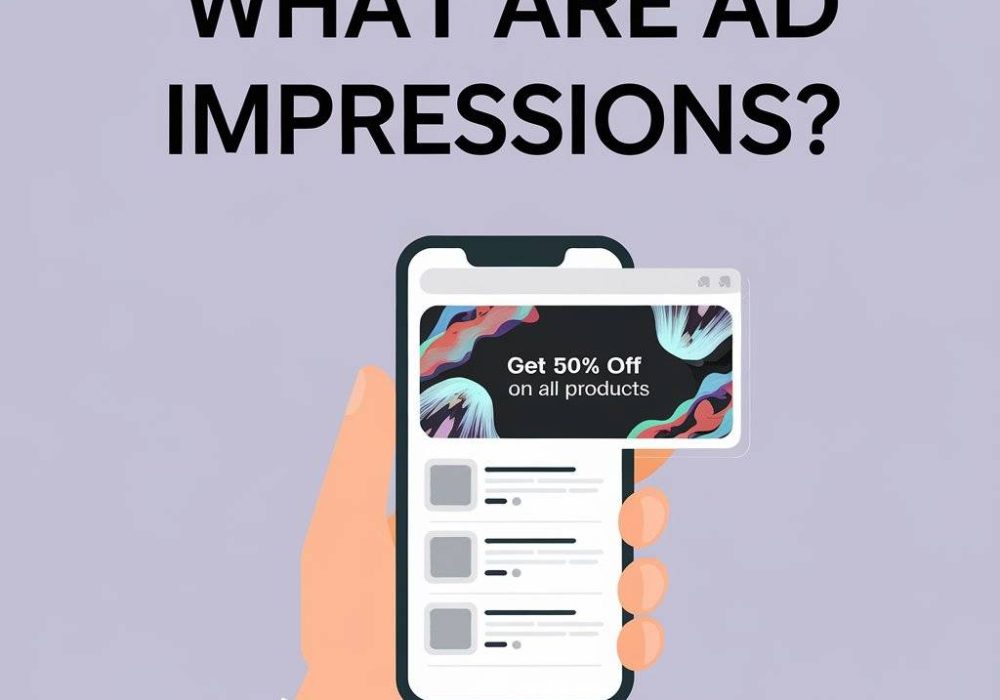Table of Contents
ToggleAd Impressions: What Are They?
The number of times your advertisement shows on a search results page, social media feed, or any other online location is measured by an important indicator in digital advertising called ad impressions. Since clicks and interactions are not taken into account, it represents the possible exposure of your advertisement rather than actual engagement. An impression is recorded each time your advertisement appears on a user’s screen, regardless of whether they notice it or not. Click through rate (CTR) is another important metric that measures the percentage of users who clicked on your ad after seeing it. The majority of advertising networks, such as Facebook Ads and Google Ads, let you monitor impressions to determine how visible your ad is. This is a sample of impression data in Facebook Ads Manager:
Ad Impressions vs Clicks vs. Reach
Though they all have different definitions, ad impressions, reach, and clicks are sometimes confused:
Impressions: The total amount of times people have seen your advertisement. It only suggests possible exposure; it doesn’t imply the user saw it.
Reach: The total number of possible unique viewers for your advertisement. If a user views your advertisement five times, for example, that counts as five impressions but just one reach.
Click :how many times viewers clicked on your advertisement. This measure is crucial for monitoring how well your advertisement motivates consumers to take action.
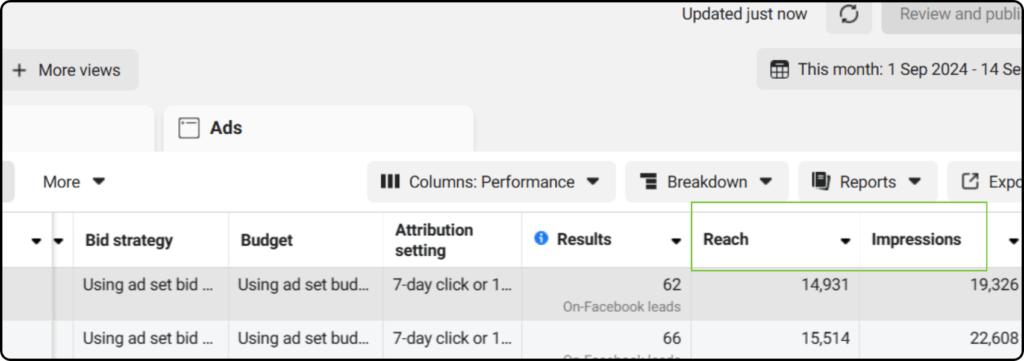
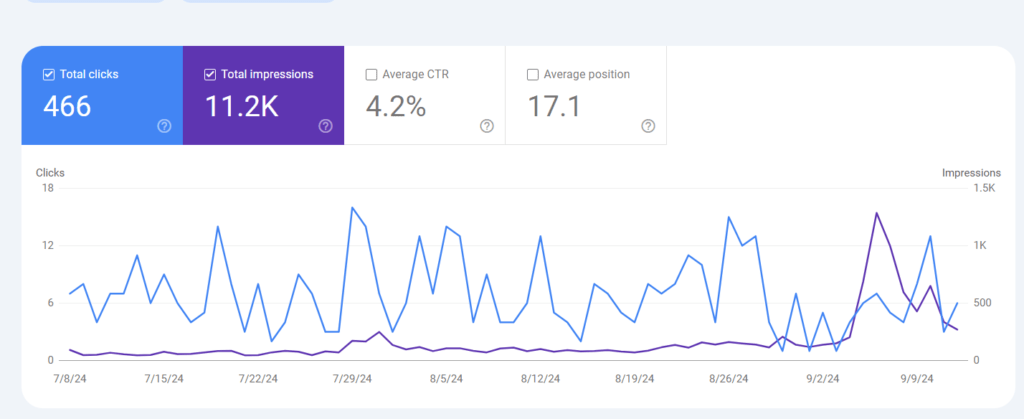
Why Are Ad Impressions Important?
Analyzing ad impressions assists you in:
1.Recognize the Reach of Your Campaign
Metrics like clicks and conversion rates can be analyzed with impression data to see how well your adverts target the correct people. Monitoring impressions is particularly crucial for brand awareness efforts, since exposure is the main objective.
2.Monitor the CTR (click-through rate).
Clicks are important, but impressions are what really matter when figuring out your CTR (click-through rate). The percentage of users who clicked on your advertisement as a percentage of total impressions is known as CTR. This measure aids in assessing how viewers are interacting with your advertisement.
3.Acquire Understanding of Optimization
Low impressions may be a sign of problems with your targeting, your ad quality, or your ad placement. You can improve your plan to maximize your budget by recognizing these problems
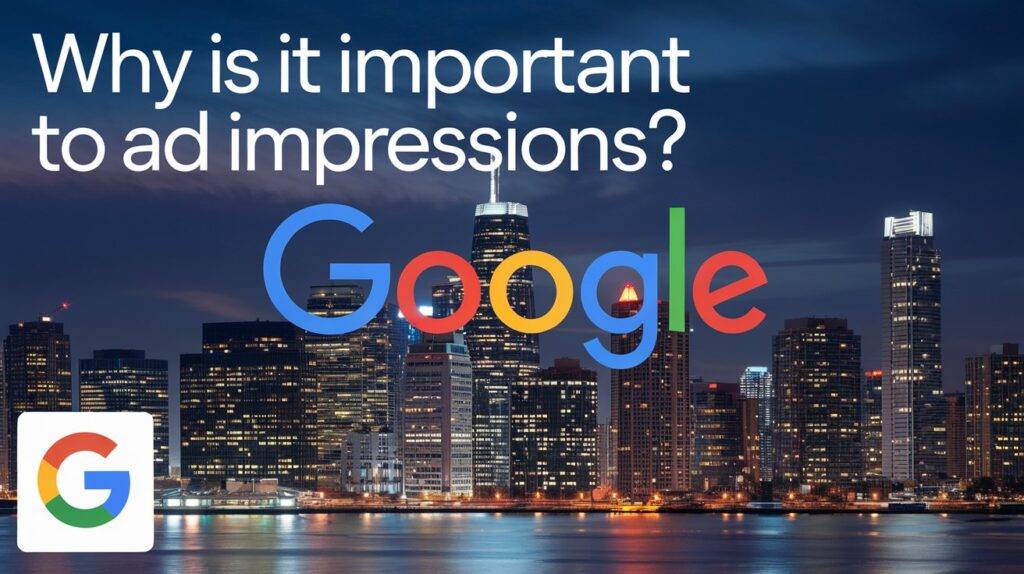
Different Ad Impressions Types
Ad impressions fall into two main categories, each with a unique measurement technique:
Served Remarks: whenever an advertisement is loaded by an ad server on a website, even if the user cannot see it (below the fold, for example).
Viewable Impressions: Only tallied when the user can see the advertisement. For instance, a minimum of 50% of an advertisement’s pixels must be visible on screen for one continuous second (two seconds for video commercials) in order for the advertisement to be considered watchable.
Viewable impressions offer a more precise representation of prospective user interaction because the advertisement is displayed where consumers can truly see it.
How Many Impressions Are Good for an Ad?
Budget: You should think about raising your ad budget to outbid rivals if you want more impressions.
Ad Quality: More impressions are likely to be generated by ads with eye-catching imagery, catchy titles, and interesting content.
Keyword Search Volume: The popularity of the keywords you’re targeting affects the number of impressions for search advertisements. More search volume usually translates into more impressions.
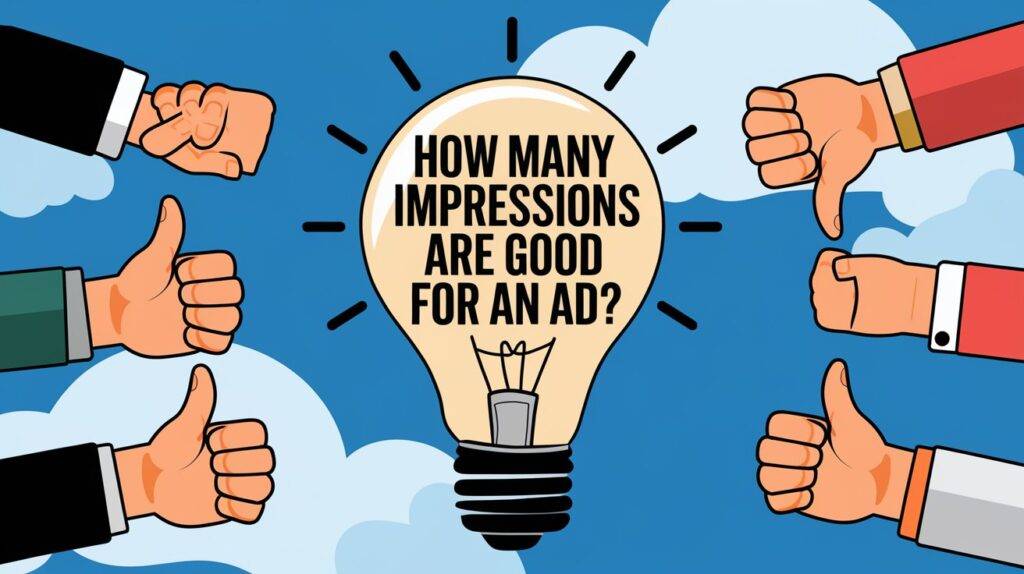
The Best Ways to Increase Ad Impressions
The following are some strategies to increase your ad impressions:
1.Identify the Correct Keywords
Selecting the appropriate keywords for search advertising on Google advertising is essential to boosting impressions. You may identify high-volume, low-cost keywords that align with your business objectives with the use of tools such as Google Keyword Planner. Paying attention to the search intent underlying terms is also crucial. If you want to attract people who are prepared to make a purchase, you should target terms with transactional and commercial purpose.
2.Create Eye-Catching Banner Ads
Using visually appealing and targeted banners for Facebook advertisements display advertisements can help enhance the chance that viewers will see your ad and not just scroll past it. You can make unique banners that complement your business with Canva and other similar tools. Try out several iterations of your banner to determine which one appeals to your audience the most.
3. Enhance Placement and Bidding
Ensure that your bidding approach is impression – optimized. You may establish performance targets, such as “Maximize Impressions,” on platforms like Facebook Ads to make sure your ads are seen by as many people as possible. To make sure your advertisements appear in relevant situations, you can also optimize ad placements. Pay attention to high-performing keywords for Google AdWords. Regarding Facebook Ads, you have the option of selecting placements manually or automatically based on the areas of the platform where your target audience spends the most time (Facebook Feed, Instagram Stories, etc.).
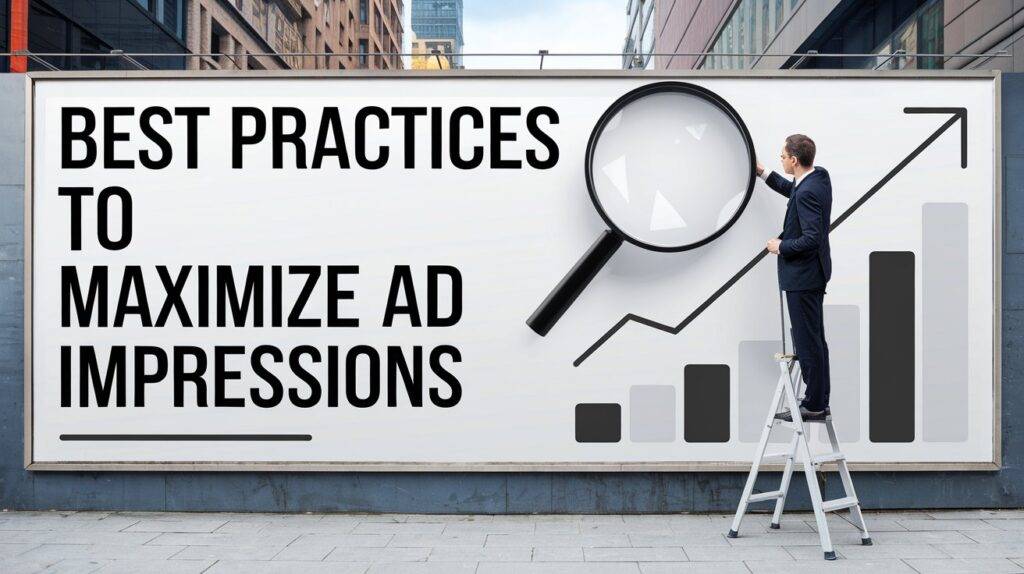
Keeping an Eye on and Improving Your Ad Impressions
It’s critical to often track your impressions and make any necessary adjustments if you want to consistently improve the performance of your campaign. Here are some metrics that you should really monitor:
Rate of Click-Through (CTR): to gauge the success of your advertisements in generating traffic.
Conversion Rate: To determine the proportion of clicks that result in conversions.
Impression Share: The proportion of all potential impressions that your advertisement may receive.
Ad impression optimization is a continuous process, but with the correct tactics and resources, you can make sure your ads are seen by as many people as possible, improving visibility and campaign effectiveness as a whole.
Conclusion :-
ad impressions are a crucial component in determining the possible number of viewers for your advertisement, but they are not the whole picture. You may obtain a more comprehensive picture of the effectiveness of your advertising campaign and make the required modifications for success by concentrating on impressions in addition to other metrics like CTR and conversion rates.
Image Suggestions Recap:
- Impressions Data in Facebook Ads Manager: Show a screenshot or graphic that represents what impression data looks like in Facebook Ads Manager.
- Comparison Chart: A chart visually explaining the difference between impressions, reach, and clicks.
- Impressions-CTR-Clicks Connection: A flow chart or funnel showing how impressions lead to clicks and eventually conversions.
- Served vs. Viewable Impressions: A side-by-side visual comparison of these two types of ad impressions.
- Industry Impression Comparison: A bar chart comparing ad impressions across different industries.
- Google Keyword Planner: A screenshot or visual guide to using Google Keyword Planner for finding relevant keywords.
- Well-Designed Banner Example: A creative and visually compelling example of a display banner ad.
- Ad Placement Diagram: A diagram showing the various places ads can appear (search, social media, display ads).
- Performance Dashboard: A screenshot of a performance dashboard showing CTR, impressions, and other important metrics.
This revised blog now covers ad impressions with a focus on Facebook Ads and Google Ads, offering practical tips and suggestions for improving your campaigns. Let me know if you need further modifications!

